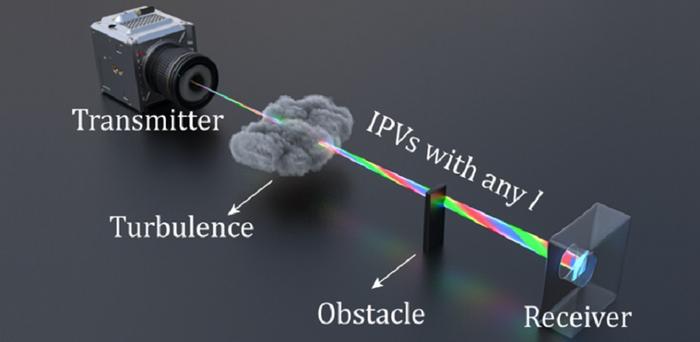The future of optical communications just got brighter. In a groundbreaking development reported in Advanced Photonics, researchers from Nanjing University have introduced iso-propagation vortices (IPVs), a novel concept that offers a solution to a long-standing challenge faced by scientists and engineers: how to increase information processing capacity while overcoming the limitations of traditional vortex beams.

Credit: Yan et al., doi 10.1117/1.AP.6.3.036002.
The future of optical communications just got brighter. In a groundbreaking development reported in Advanced Photonics, researchers from Nanjing University have introduced iso-propagation vortices (IPVs), a novel concept that offers a solution to a long-standing challenge faced by scientists and engineers: how to increase information processing capacity while overcoming the limitations of traditional vortex beams.
Challenge: divergence and beam size
Multiplexing of optical degrees of freedom, such as polarization and wavelength, has been a staple in enhancing communication capacity. However, spatial mode-division multiplexing, which uses orthogonal spatial modes like orbital angular momentum (OAM) modes (also known as vortex beams), faces a significant hurdle. As these vortex beams propagate through free space, their beam size invariably diverges with OAM, posing constraints on capacity due to the need for larger receivers.
Enter IPVs
IPVs represent a paradigm shift. Unlike conventional vortex beams, IPVs exhibit OAM-independent propagation. In other words, their beam size remains consistent during free-space propagation, regardless of the OAM mode. This breakthrough opens exciting possibilities for spatial mode multiplexing communication, fiber optic data transmission, and even particle manipulation.
Key advantages of IPVs:
- OAM-independent propagation: IPVs maintain a constant beam size, irrespective of the OAM mode. This feature allows for efficient utilization of spatial modes without requiring excessively large receivers.
- Resilience to atmospheric turbulence: IPVs demonstrate enhanced transmission dynamics with reduced quality factors. Even under atmospheric turbulence, they remain robust, making them ideal for real-world applications.
- Experimental capacity improvements: The research team conducted thorough comparisons between IPV multiplexing and existing optical schemes. The results were astounding, with capacity improvements ranging from 300 percent to an astonishing 808 percent.
Applications and future prospects
The impact of IPVs extends beyond communication. Imagine faster data transmission rates, more efficient particle manipulation in scientific experiments, and improved fiber optic networks. As we delve deeper into the potential of IPVs, industries ranging from telecommunications to scientific instrumentation stand to benefit significantly.
Dr. Jianping Ding, corresponding author and senior researcher, expressed optimism: “Iso-propagation vortices represent a leap forward in our quest for greater information capacity. We’re excited to explore their applications and collaborate with industry partners.”
Stay tuned for updates as IPVs revolutionizes optical communication.
For details, see the original Gold Open Access article by W. Yan et al., “Iso-propagation vortices with OAM-independent size and divergence toward future faster optical communications,” Adv. Photon. 6(3) 036002 (2024), doi 10.1117/1.AP.6.3.036002.
Journal
Advanced Photonics
DOI
10.1117/1.AP.6.3.036002
Article Title
Iso-propagation vortices with OAM-independent size and divergence toward future faster optical communications
Article Publication Date
17-May-2024




